Thieves’ tools are an iconic piece of kit in RPGs. Their nature is often handwaved as “y’know, lockpicks and stuff”. When it doesn’t matter, that’s totally the right call. But specificity can prompt adventure! A specific tool, given as treasure to the PCs, can open new avenues for them. A novel tool hitting the streets can generate fun mysteries. Here, then, are six thieves’ tools used in late 1800s New York City. I took them from a memoir by an odious New York lawyer. Because of the era – modern, but not too modern – something like these tools should work in most fictional RPG settings.
At the end of this post, I’ve got another installment of ‘This Post as a Fantasy Adventure’, a series I’ve been trying out at the suggestion of regular reader Chris. Thanks, Chris!
This post is brought to you by beloved Patreon backer Robert Nichols. Thanks for helping keep the lights on! If you want to help keep this blog going alongside Robert, head over to the Patreon page – and thank you!
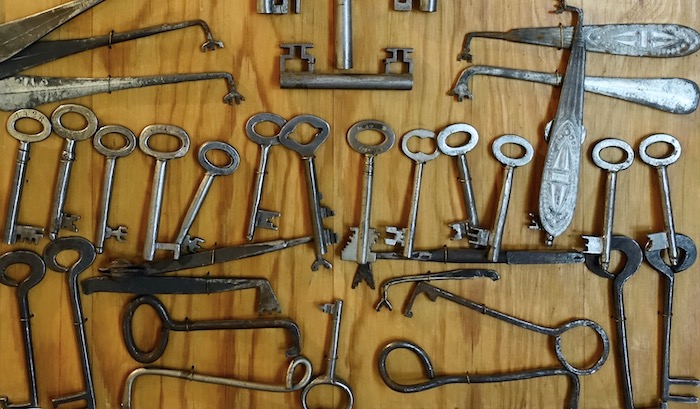
Our first tool is an outfit worn by some specialized female shoplifters in the Empire City (the term preceding ‘Big Apple’) in the late 19th century. A stout bag hangs between her legs, suspended by leather straps that go over her shoulders and around her hips. These straps may even be built into her corset for extra support. A period-appropriate long skirt or dress hides the bag from view. In the front of the skirt, concealed within its folds, there is a slit through which the shoplifter can pass articles and drop them into the sack. In cold weather, she wears a fur circular or cloth cloak over her front to further conceal the slit. In warm weather, a light shawl accomplishes the same purpose.
But the outfit is not yet complete! Many professional shoplifters also wore a fake fur muffler – a sort of puffy scarf fashionable at the time. The thieves’ version was built not on a core of cotton padding, but on a wire frame. A clever slit in the inside of the muffler let the shoplifter pass items into the hollow center of her scarf.
This system was especially useful when robbing department stores and other shops with long counters. You’d come in dressed as a woman of means, approach the counter, and ask the attendant to take down various silks and jewelry from the shelves behind the counter and show them to you. One by one, you examine the articles, put them back on the counter, and ask to see another. Soon, you’ve got a messy pile in front of you. None of this is weird; it’s how rich ladies were expected to shop. And once you’ve got a pile going, every time the attendant turns around to take something else off the shelf, an expensive item from the pile vanishes into your bag or your muffler. The pile is large and chaotic. No one will notice that something is missing, or that the pile seems to be growing more slowly than before. Your work done, you might purchase one or two items to keep up appearances, then move on to another counter or another store.
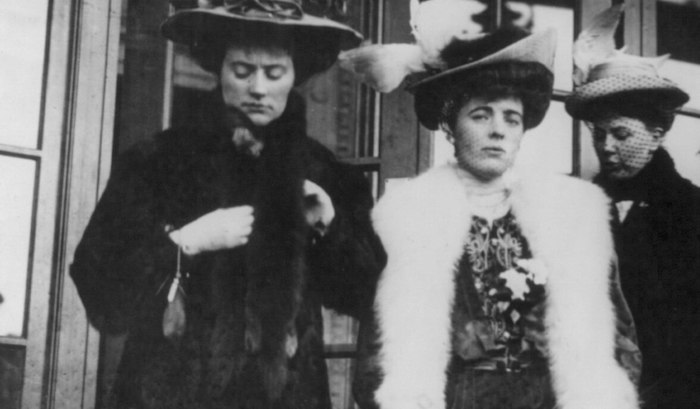
Naturally, in this highly-gendered Victorian world, there was a male equivalent to this shoplifting outfit. It was a specialized briefcase. It looks like a normal briefcase: handle and clasps on one side, hinges on the other. But those clasps and hinges are actually nonfunctional. Instead, what appears to be the metal clasp actually conceals the real hinges, which the thief keeps well-lubricated so the briefcase can open silently. If you put your briefcase on a table handle-side up (as was common) and work the slide, the briefcase wouldn’t open at the top, but at the bottom. And it probably only opens an inch or so anyway, so an observer really has to be paying attention to notice anything has happened at all.
You can walk into a shop, ask to examine some cloth, and get a pile going as before. Then place your suitcase atop a particularly choice specimen. While the attendant’s back is turned, silently open the suitcase an inch, yoink the cloth up inside it with a single smooth motion, and shut it again. It takes but an instant and no weird movements that will attract attention.

Our next specialized piece of equipment was used in that classic New York robbery: the panel game. The panel game came in a lot of varieties, but this is the one that required specialized kit. The centerpiece of the scam, a beautiful young woman, would go walking the streets at night for a mark: a lonely man, preferably one who’d been drinking. They’d ‘happen’ to bump into each other, maybe she’d give him the chance to pick up something she’d dropped, and they’d establish a connection. “Listen,” she’d say bashfully, “my place isn’t far. Do you maybe want to go back there?”
In her rented room, there’d be a bed, at least one chair, and a folding panel or folding screen. The woman would put her hat and coat on various chairs so that there’d be only one chair for the man to put his clothes on: one right beside the folding panel. But the panel had a peephole in it and a concealed door. The woman’s accomplice (often her boyfriend) would watch through the peephole until he was sure the mark was busily engaged and facing away from the panel. Then the accomplice would quietly open the door, steal the mark’s wallet from his pants, and replace the pants on the chair. Then he’d leave via a door concealed behind the panel, go around to the front of the house, and noisily ascend the stairs.
The woman would gasp, “Oh no! That’s my husband! He’s terribly jealous – as soon shoot you as see you! Quick, quick, there’s a door behind the panel – run!” The panicked mark would flee out the back, pants in hand, not thinking to check that his wallet was still there. By the time he realized he’d been had, he’d be blocks away – and in his drunken fog, he could only rarely remember which building he’d fled from. The panel game was very common, yet almost never prosecuted because the marks could so rarely provide anything useful.
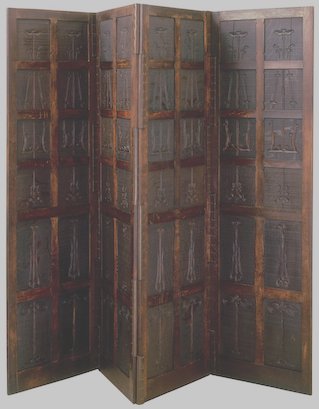
Our next thieves’ tool is a little more straightforward: fake wine to get your mark drunker for cheaper. There were all sorts of scams going in late-1800s New York that boiled down to ‘get someone real drunk, rob him, and then confuse him so he can’t report you.’ There were entire establishments devoted to such scams, full of pretty women who begged patrons to drink with them and buy them drinks, then sipped nothing but colored water while their mark unknowingly drank himself under the table. The girls split the price of the mark’s drinks with the house, and sometimes engaged in sex work on the side. When I was in the Navy, sailors called such establishments ‘buy-me-drinkie bars’. They’re all over the Pacific.
For the buy-me-drinkie model to work, you’ve gotta get the guy way drunker than he realizes. A drunk man doesn’t blink at the insane prices you’re charging him. If you rush him along to passing out, you can go through his pockets and dump him in an alley a couple blocks away. He has only hazy, unprovable memories of what happened to him. And you’ve freed up his barstool for another mark you can flatter into buying you overpriced drinks.
In the Empire City, to get these guys drunk, proprietors mixed apple cider and cheap whiskey, then sold it as wine. As John 2:10 reminds us, if a mark’s already had a few drinks, he probably can’t taste the difference. And for every glass of ‘wine’ he thinks he’s downing, he’s really guzzling three or four shots of whiskey. Soon he’s face-first on the sawdust-covered floor, then being carried out the back with empty pockets. Sometimes the best thieves’ tools aren’t a fancy lockpicking set but a cheap way to accelerate the turnover of “Get up Jack, John sit down.”
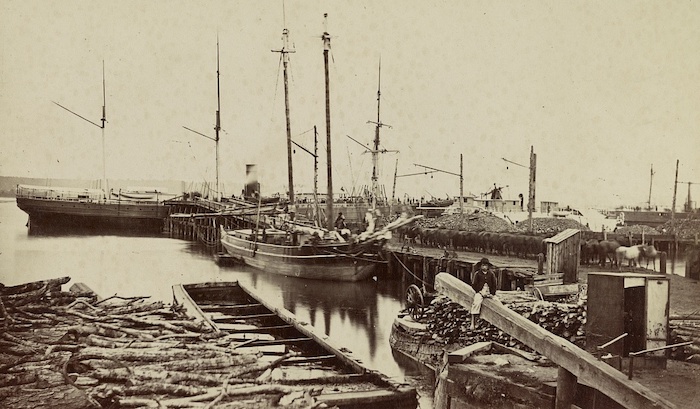
Our final two tools are for crime on the docks. At the time, Manhattan was hairy with wharves. Every inch of coastline that could be used for offloading or onloading ships was in use. New York was also lousy with street urchins. For many of them, the docks were a natural home. You could try to earn a little money as a stevedore, escape the cops and predators of the city, or just sit on them and watch the sun set over the Hudson River. Also, there was cargo to steal. The police patrolled the wharves at night, so large-scale theft was more trouble than it was worth for these kids. But if anything were to disappear out of sight of the cops, that would be just fine.
The chief tool for such thefts was an augur. Boys would steal a skiff and row as quietly as they could to a spot under a wharf where barrels were stacked. Then, from under the dock, a boy could drill a hole through the planking of the wharf and the butt of the barrel. Any liquid in the barrel – whiskey was a special target – would flow down into the skiff, where another boy was waiting with an empty barrel. You could then take your barrel of whiskey to a wholesaler who didn’t ask too many questions.
But the best thieves’ tool for life on the docks is the largest one in the list – and the one that stretches the definition of ‘tool’ the furthest: a secret clubhouse! Gangs of urchins would steal lumber from construction sites, crawl underneath a dock, and construct a room where no one could see it. The floor hung just above the high-water line. Given enough time, they’d fill their hideout with scrounged-up furniture, posters, and even sometimes a stove. Here, the kids could pass their time in a safety and comfort they could not hope for up above. These little clubhouses could go years without being discovered by the police (and consequently torn out by the dock’s owner). Many a policeman chasing a petty thief near the docks was shocked to round a corner and see his target had inexplicably vanished – ducked under a pier into a secret hideout.

Setup: A PC is carrying a suitcase. She puts it down for a moment, then picks it back up, not realizing she’s grabbed an identical-looking suitcase instead. When she goes to open it, she finds it’s one of the upside-down thieves’ suitcases with the hidden hinges. No one in the party has even heard of this piece of kit. It’s new to them. But it’s clearly a thief’s tool.
If there’s no reason for a PC to be carrying a suitcase, this happens instead to a recurring NPC. Or to a new NPC who’s heard of the PCs and is willing to approach them.
When the PCs open the fancy suitcase, they find it’s full of a wonderful treasure. This is a great opportunity to highlight something cool and special in your own fictional campaign setting. If nothing’s springing to mind, have the suitcase be full of gem-encrusted clockwork toys.
So now the PCs have a suitcase full of stolen wonders, a heads-up that someone in town is making innovative new thieves’ tools, and (maybe) a missing suitcase of their own they need to recover.
Investigation: There are a few ways the party might handle this, but they all lead to a woman named Mary Bodine. She made this thief’s suitcase and is in possession of the party’s original suitcase.
– If the party wants to sell their newly-acquired goods, ask them to tell you about the fence to whom they go to sell the loot. While they’re visiting with the fence, a thief named Berstolm wanders in. He’s looking to offload some goods of his own – and he’s carrying an identical suitcase. He’s cagey and shuffles his feet, but for a small fee, he’ll point the PCs in the direction of Mary Bodine, the woman who sold him his.
– If the party wants to return their newly-acquired goods to their rightful owner, it’s easy to ask around and learn they were made by Agathon Rubin, an artificer who makes fabulous toys for the wealthy. Agathon is lonely. It’s obvious – make it offputting. His gratitude to the PCs for returning his goods (and hope that maybe they’ll be his friends) distracts him while another customer, Talian, robs him using a fake fur muffler. This device too is new to the PCs. They don’t have to roll to spot her using it. (Never require a roll for core clues.) Talian is nervous. She’s a professional shoplifter freshly arrived from another city where the night watch and storekeepers learned to recognize her face. If the PCs agree not to turn her over to the magistrates, Talian will tell them where to find Mary Bodine, the woman she bought this novel thief’s tool from.
– If the PCs want to investigate this fancy thief’s briefcase they have, they can ask around and find there’s a luggage-maker in town. Her name’s Chirla. She’s a proud woman. She recognizes her leatherwork immediately, but points at the latches and hinges and says they aren’t hers. The suggestion that someone might be using her good workmanship in crimes is enough to offend her professional dignity and get her to volunteer the location of a likely culprit: Mary Bodine, who bought a bunch of suitcases like this.
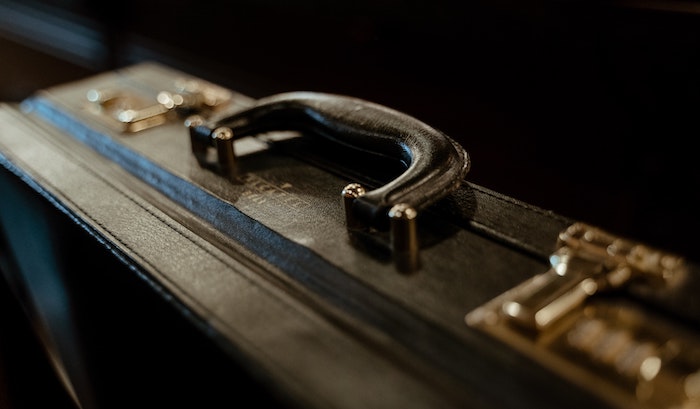
Situation: Mary Bodine is innovative, smart, and a thief. She devotes her considerable talent to devising new schemes and new tools, then either using them herself or selling them to lesser thieves. She fancies herself a Moriarty-style criminal mastermind. She’s not there yet – her mix-up grabbing the wrong briefcase proves that – but she might well get there, given time.
Mary’s plan is to use a new scheme she’s devised (she calls it ‘the panel game’) to steal from toymaker Agathon Rubin the key he carries on his person that disables the magical wards on his shop. She’s going to use the panel game to steal the key tonight, though she still needs to select her accomplice. Later tonight she’ll steal as many gem-encrusted clockwork marvels (or whatever loot you chose to put in the suitcase) as she can carry, board a ship or an express carriage, and flee the city.
Mary is hanging out at a buy-me-drinkie bar. She’s not working there; she’s friends with the owner. When the PCs find her, she’ll know she’s been made. She’ll first try to get the PCs blackout drunk on fake wine so she can escape, pull her scheme, and flee the city before the party sobers up.
If the party isn’t interested in booze (or passes their perception checks to realize what she’s feeding them), Mary will try to rope the PCs into her scheme. She’ll ask the sexiest PC to run the panel game, with Mary behind the panel grabbing the key from Agathon’s pants. If the party is willing, she’ll bring them along to rob the store. There’s enough inventory for everyone to leave rich. She expects the PCs will betray her at some point, so she means to betray them first. Given the opportunity, she’ll lock them inside the shop with her and the magic key outside. Otherwise, she’ll wait until the group is out of the city, then call in a favor with a djinn to summon some monsters while she makes a getaway.
If the PCs want their own suitcase back, Mary won’t hold it hostage per se. But she will say it’s in a different location and she’s got other things he needs to focus on tonight. Maybe if they help her, she’ll be able to wrap those things up faster and find time to return their suitcase. She’s afraid if she just hands the suitcase over, the party will leave and tell the magistrates she’s up to something.
Keep it fluid! There are three ways to find Mary. Once you’ve found her, there are ten thousand ways the party can react to the situation. None of them are the ‘right’ way. Just respond to whatever the party does, remember that Mary thinks she knows how things are going to go (even if she’s wrong), and let events transpire organically.
There are plenty of opportunities for fights. If the PCs bring the night watch into the bar where Mary’s drinking, expect a big, throw-down brawl against the patrons and staff. Most are armed, all fight dirty. If the PCs get locked inside Agathon’s store, some giant clockwork constructs unfold from beneath the floor to fight whomever’s inside the shop. And there’s always the possibility of a fight against djinn-summoned monsters at the end.

Have you heard about Ballad Hunters, my upcoming RPG about singing and fighting magical folk ballads in 1813 England and Scotland? Check out the free early-access zine edition!






